A mole is a small coloured spot on the skin which is made up of a cluster of cells known as melanocytes, which are responsible for producing the pigment in your skin. Occasionally these melanocytes grow in a cluster instead of being spread out, which results in the formation of a mole. Most people have moles on their skin and they are usually nothing to worry about unless they begin to change in appearance, particularly size, shape or colour.
Alternative names: naevus, nevus, junctional naevus, compound naevus, intra-dermal naevus, congenital melanocytic naevus, halo naevus, atypical naevus, dysplastic naevus, epidermal naevus, naevus sebaceous, naevus lipomatosus superficialis.
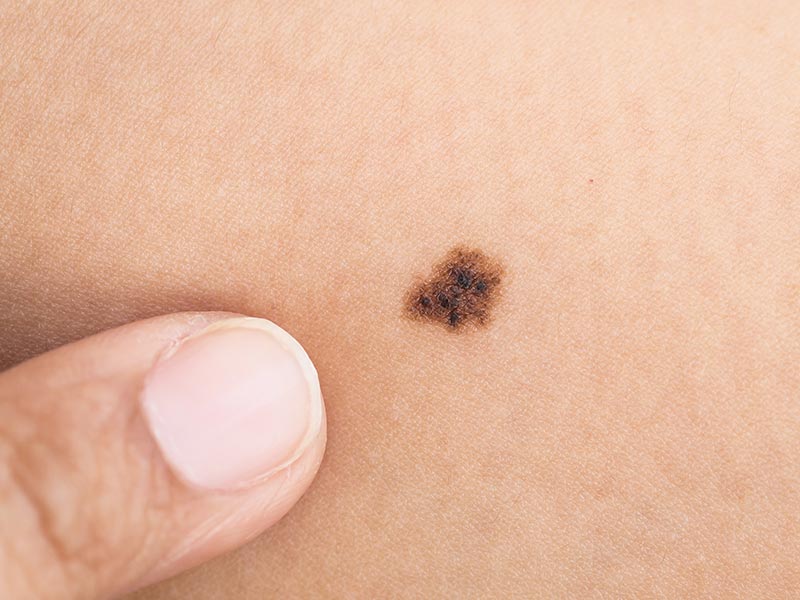
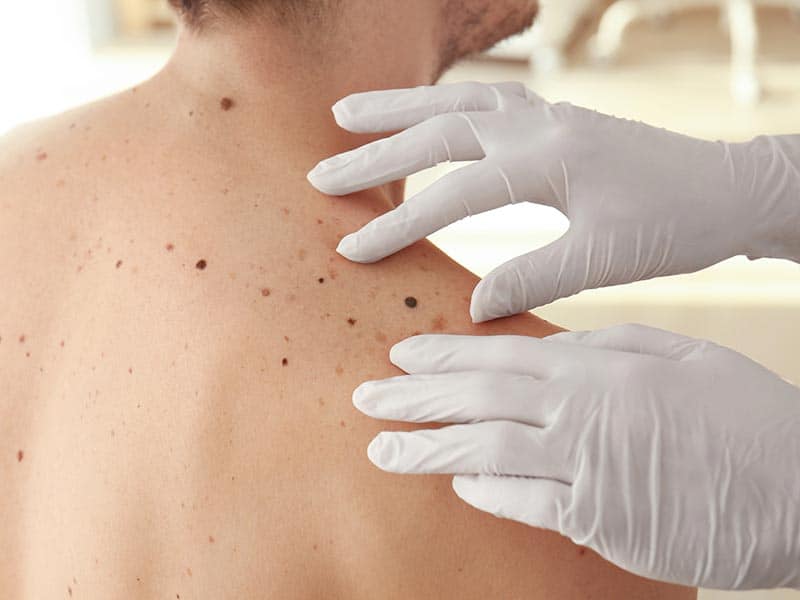
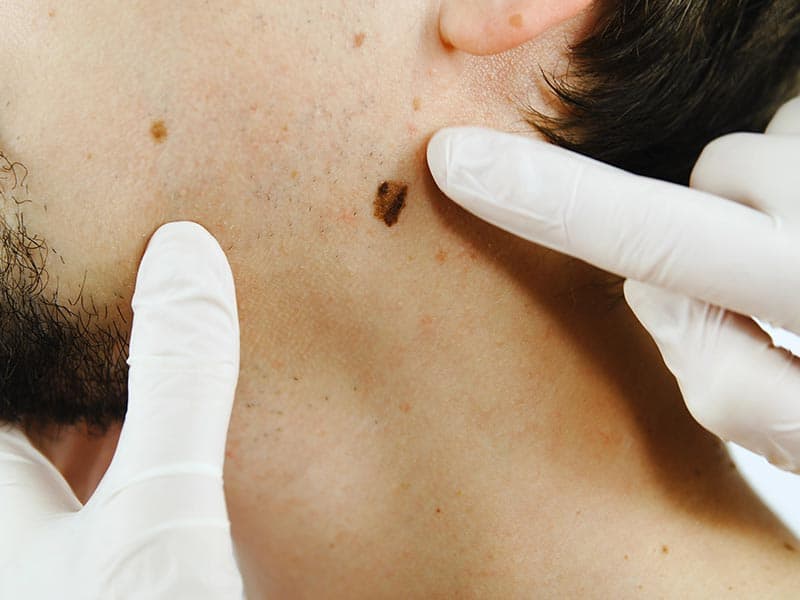
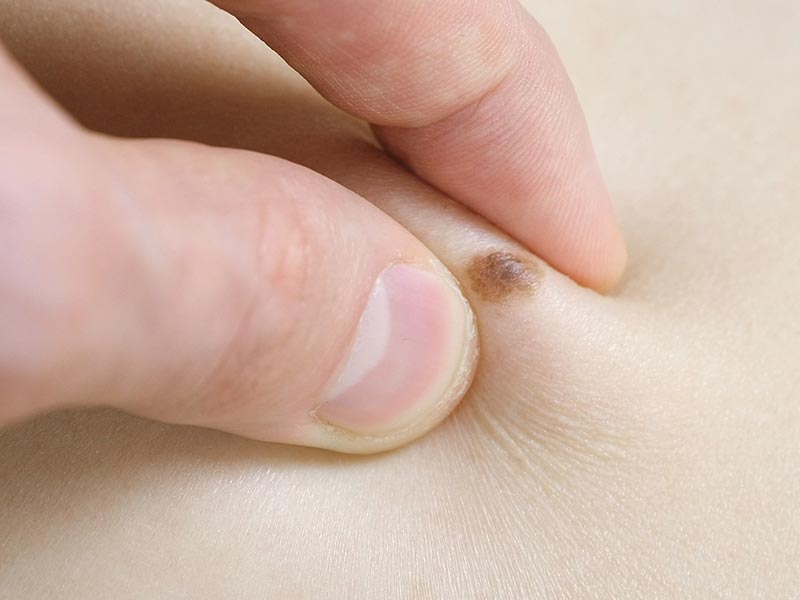
REQUEST A CALL BACK
Arrange a consultation with one of our expert dermatologists today.
WHAT CAUSES MOLES?
Moles are dark spots that can appear anywhere on the body and can be raised or flat. Sometimes moles are present at birth, but usually they develop in childhood. Genetics can play an important role in the likelihood of an individual developing moles, as can exposure to the sun. Many people also find that their moles change and respond to hormonal changes, for example during pregnancy they may get darker, puberty may cause more moles to appear, and from around the age of 40 to 50 they may begin to fade away and disappear. All of these changes to moles are normal.
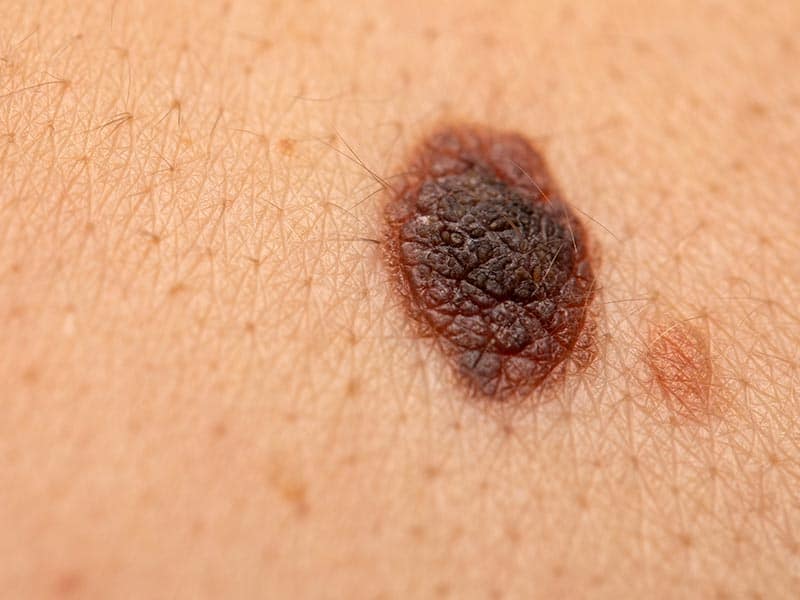
WHAT ARE THE SYMPTOMS/TYPES OF MOLES?
Moles are usually brown but can vary from flesh-coloured, to pink, black or blue. They are sometimes flat to the skin, they may be raised and rounded, or warty looking. They are usually quite symmetrical, circular and evenly pigmented.
HOW CAN MOLES TURN CANCEROUS?
The appearance of a new mole, or any changes to an existing mole could be an indication of a melanoma, a form of skin cancer. This is why it is so important to regularly check and monitor your moles for any changes.
Regularly checking and monitoring your moles for changes is vital to spotting malignant melanoma and getting it treated as soon as possible. Here is what you should be looking out for when checking your moles:
A Asymmetry – one half doesn’t match the other half
B Borders – the mole has uneven borders
C Colour – there is a variety of colours in the mole (brown, tan or black)
D Diameter – the mole grows larger than a pencil eraser (¼ inch)
E Evolution – the mole evolves in size, shape, colour, elevation or there is a new characteristic
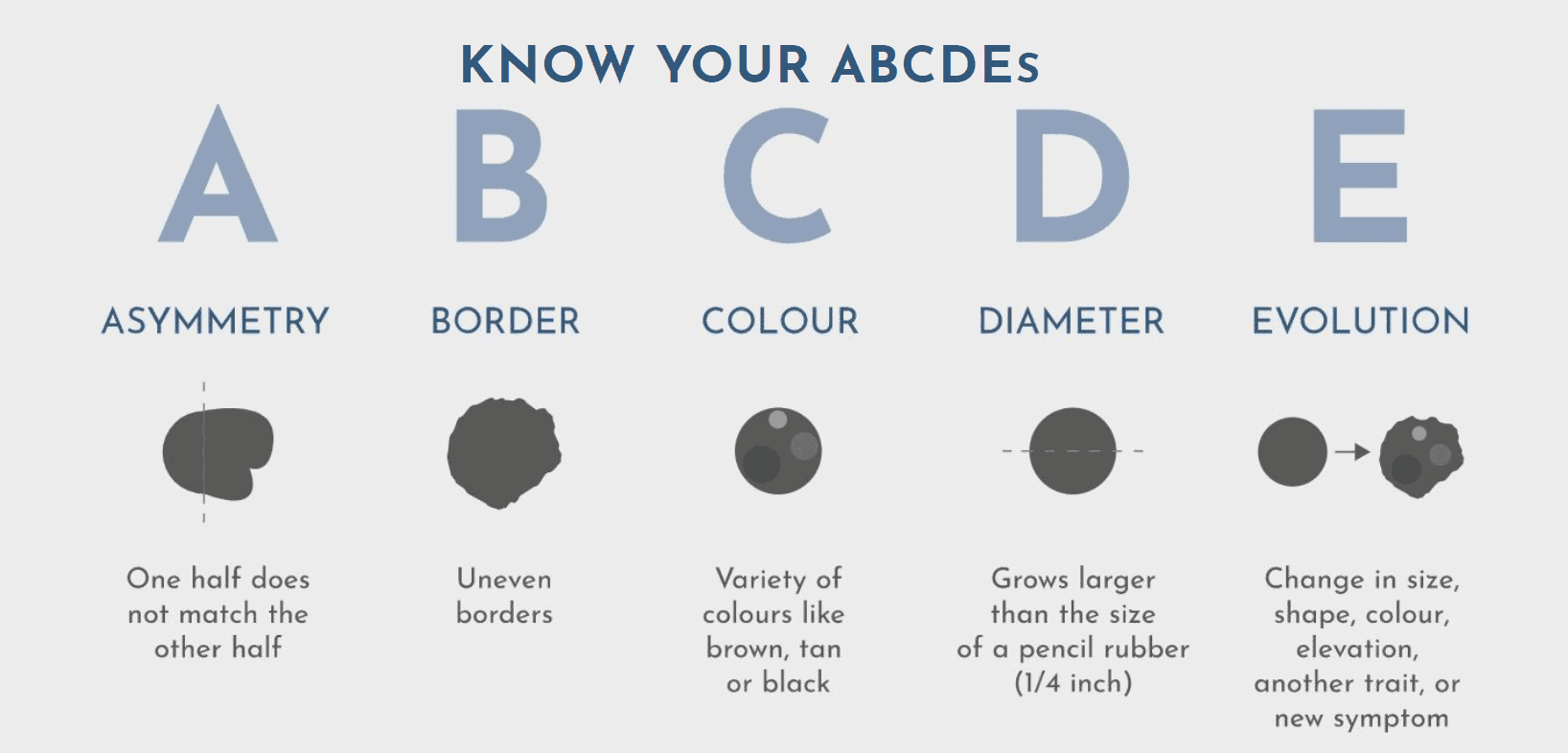
If you notice any changes to your moles, make an appointment with a consultant dermatologist who will be able to quickly diagnose and if necessary provide treatment.
UV light in the form of sunlight and artificial light can increase your chances of a mole becoming cancerous. If you have lots of moles on your body, you need to be particularly careful in the sun. It is important to wear high factor sun cream and avoid the sunlight when it is at its strongest from midday to 3pm.
WHAT MOLE TREATMENTS ARE AVAILABLE?
For cosmetic removal of moles, a shave excision is the best way for a mole to be removed as it is a less invasive treatment. In this treatment, a sharp razor is used to cut away the mole from the skin. If your doctor is worried about a mole, surgical excision is the best option. This treatment involves cutting away the lesion from the skin, along with a margin of healthy skin under local anaesthetic. Depending on the size and location of the surgery, the area can be stitched or a skin graft can be used.
Having a mole removed is very easy. You will only need to have a local anaesthetic and the procedure can be carried out at a clinic. Depending on the amount of tissue that has to be removed, you may need stitches and there could be a small scar after the procedure. The removed mole can be checked in the lab for signs of cancer even if it was removed for cosmetic reasons as you may need further treatment if any cancer cells are found.
Mole treatments we offer include:
- Shave excisions
- Surgical excisions
REQUEST A CALL BACK
Arrange a consultation with one of our expert dermatologists today.
WHY HAVE YOUR MOLES CHECKED AT STRATUM DERMATOLOGY CLINICS?
If you are looking for a private skin cancer clinic, Stratum Dermatology Clinics have clinics nationwide offering mole checking, mole removal and skin cancer treatment. Here at Stratum Dermatology Clinics, we understand how skin conditions can negatively impact your life. We help hundreds of patients each month and our dermatology experts have a wealth of experience in the assessment, treatment and management of all types of skin cancers.
The main symptom of melanoma skin cancer is a change to an existing mole or freckle or the appearance of a new mole. It is therefore vital that moles are checked regularly and any changes are noticed and seen by a doctor. The earlier melanoma skin cancer is identified, the easier it is to treat and cure.
We work with leading experts in the field of dermatology to ensure you have the best experience and treatment. Stratum Dermatology Clinics are regulated by the Care Quality Commission, are part of the British Association of Dermatologists and are top rated by patients on Doctify and Trustpilot. Both Stratum Dermatology Clinics and the consultants who work here are recognised by the main healthcare insurance providers.
HEAR FROM ONE OF OUR MOLE CHECK PATIENTS
“I attended the clinic to seek advice about a mole. All the staff were very professional and courteous and I was seen on time. Not only was I advised about the nature of my mole and about the removal procedure but I was offered the procedure there and then. Ten minutes after my arrival I was leaving the clinic minus my mole. Amazing!”
FREQUENTLY ASKED QUESTIONS
Should my mole be removed?
A cosmetic mole removal can be performed just because you are unhappy with your mole. If you are feeling self-conscious or a raised mole is causing problems by getting caught on your clothing, it might be worth considering a removal. Mole removal can also be required for medical reasons. If you have noticed changes in the size, shape, colour or appearance of a mole, it is a good idea to see a dermatologist at the London clinic. The doctor can assess the risk of skin cancer and perform a removal if necessary. Find out more about mole removal at Stratum Dermatology Clinics.
What should I look for when checking my moles?
Most moles are completely harmless, but it’s important to check your skin regularly so that you can spot any changes in size, shape, or colour early and get them checked out. Moles are typically brown in colour, although they can also be much darker, or may even be skin coloured. They can either be flat or raised, rough or smooth, and some may have hair growing from them.
Things to look out for when you’re checking your moles include:
- Asymmetry: The two halves of the area may differ in shape.
- Border: The edges of the area may be irregular or blurred, and sometimes show notches.
- Diameter: Most melanomas are at least 6mm in diameter. Report any change in size, shape or diameter to your doctor.
- Expert: If in doubt, check it out.
A change in the size and shape of your moles doesn’t necessarily mean that you have developed melanoma; there are a variety of other reasons why your moles may be behaving that way. The most important thing to remember is to check your moles regularly.
Find out more about our mole checking service at Stratum Dermatology Clinic.
Will my mole grow back?
If removed correctly, a non-cancerous mole will not grow back. There is a chance that a mole with cancerous cells might grow back if the cancerous cells have spread before the mole was removed. Your doctor will analyse the mole once removed to see if any cancerous cells were present and discuss with you any further treatment you require.
REQUEST A CALL BACK
Please fill in this form and one of our team will give you a call back to arrange a consultation with one of our expert dermatologists.

